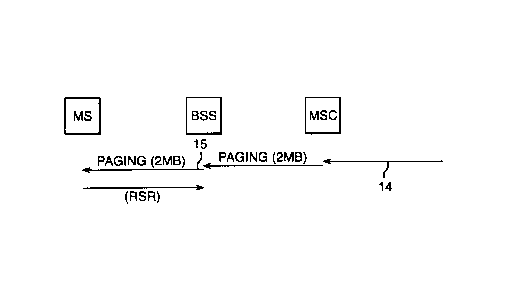Some of the information on this Web page has been provided by external sources. The Government of Canada is not responsible for the accuracy, reliability or currency of the information supplied by external sources. Users wishing to rely upon this information should consult directly with the source of the information. Content provided by external sources is not subject to official languages, privacy and accessibility requirements.
Any discrepancies in the text and image of the Claims and Abstract are due to differing posting times. Text of the Claims and Abstract are posted:
| (12) Patent Application: | (11) CA 2310346 |
|---|---|
| (54) English Title: | SIGNALLING RADIO SERVICE REQUIREMENTS |
| (54) French Title: | SIGNALISATION DES EXIGENCES DE SERVICE RADIOELECTRIQUE |
| Status: | Deemed Abandoned and Beyond the Period of Reinstatement - Pending Response to Notice of Disregarded Communication |
| (51) International Patent Classification (IPC): |
|
|---|---|
| (72) Inventors : |
|
| (73) Owners : |
|
| (71) Applicants : |
|
| (74) Agent: | KIRBY EADES GALE BAKER |
| (74) Associate agent: | |
| (45) Issued: | |
| (22) Filed Date: | 2000-05-31 |
| (41) Open to Public Inspection: | 2000-12-08 |
| Examination requested: | 2000-05-31 |
| Availability of licence: | N/A |
| Dedicated to the Public: | N/A |
| (25) Language of filing: | English |
| Patent Cooperation Treaty (PCT): | No |
|---|
| (30) Application Priority Data: | ||||||
|---|---|---|---|---|---|---|
|
A method of establishing transmissions to a mobile station in a cellular
radio communications system is described, comprising receiving a signal
originating a call at a switch and notifying a network accordingly with a
paging
message, and supplying the paging message to the mobile station, wherein an
indication of the radio service requirement is also provided with the paging
message. Subsequently, only those cells which fulfil the radio service
requirement need be measured, to determine which one is to be used.
Note: Claims are shown in the official language in which they were submitted.
Note: Descriptions are shown in the official language in which they were submitted.

2024-08-01:As part of the Next Generation Patents (NGP) transition, the Canadian Patents Database (CPD) now contains a more detailed Event History, which replicates the Event Log of our new back-office solution.
Please note that "Inactive:" events refers to events no longer in use in our new back-office solution.
For a clearer understanding of the status of the application/patent presented on this page, the site Disclaimer , as well as the definitions for Patent , Event History , Maintenance Fee and Payment History should be consulted.
| Description | Date |
|---|---|
| Inactive: IPC expired | 2024-01-01 |
| Inactive: IPC deactivated | 2021-11-13 |
| Inactive: IPC deactivated | 2021-11-13 |
| Inactive: IPC deactivated | 2021-11-13 |
| Inactive: IPC deactivated | 2021-11-13 |
| Inactive: IPC assigned | 2020-02-06 |
| Inactive: First IPC assigned | 2020-02-06 |
| Inactive: IPC assigned | 2020-02-06 |
| Inactive: IPC assigned | 2020-02-06 |
| Inactive: IPC expired | 2009-01-01 |
| Inactive: IPC expired | 2009-01-01 |
| Inactive: IPC expired | 2009-01-01 |
| Inactive: IPC expired | 2009-01-01 |
| Inactive: IPC from MCD | 2006-03-12 |
| Inactive: IPC from MCD | 2006-03-12 |
| Application Not Reinstated by Deadline | 2004-05-31 |
| Time Limit for Reversal Expired | 2004-05-31 |
| Inactive: Abandoned - No reply to s.30(2) Rules requisition | 2003-08-25 |
| Deemed Abandoned - Failure to Respond to Maintenance Fee Notice | 2003-06-02 |
| Inactive: S.30(2) Rules - Examiner requisition | 2003-02-24 |
| Application Published (Open to Public Inspection) | 2000-12-08 |
| Inactive: Cover page published | 2000-12-07 |
| Inactive: Filing certificate - RFE (English) | 2000-09-18 |
| Inactive: Office letter | 2000-09-18 |
| Inactive: IPC assigned | 2000-08-18 |
| Inactive: First IPC assigned | 2000-08-18 |
| Inactive: Filing certificate correction | 2000-07-21 |
| Request for Priority Received | 2000-07-21 |
| Letter Sent | 2000-07-18 |
| Filing Requirements Determined Compliant | 2000-07-13 |
| Inactive: Filing certificate - RFE (English) | 2000-07-13 |
| Letter Sent | 2000-07-12 |
| Application Received - Regular National | 2000-07-12 |
| Request for Examination Requirements Determined Compliant | 2000-05-31 |
| All Requirements for Examination Determined Compliant | 2000-05-31 |
| Abandonment Date | Reason | Reinstatement Date |
|---|---|---|
| 2003-06-02 |
The last payment was received on 2002-03-28
Note : If the full payment has not been received on or before the date indicated, a further fee may be required which may be one of the following
Please refer to the CIPO Patent Fees web page to see all current fee amounts.
| Fee Type | Anniversary Year | Due Date | Paid Date |
|---|---|---|---|
| Request for examination - standard | 2000-05-31 | ||
| Registration of a document | 2000-05-31 | ||
| Application fee - standard | 2000-05-31 | ||
| MF (application, 2nd anniv.) - standard | 02 | 2002-05-31 | 2002-03-28 |
Note: Records showing the ownership history in alphabetical order.
| Current Owners on Record |
|---|
| LUCENT TECHNOLOGIES INC. |
| Past Owners on Record |
|---|
| MAURO COSTA |
| MICHAEL ROBERTS |
| SUTHA SIVAGNANASUNDARAM |